5 Key Tips to Harness Collective Philanthropic Impact in Asia
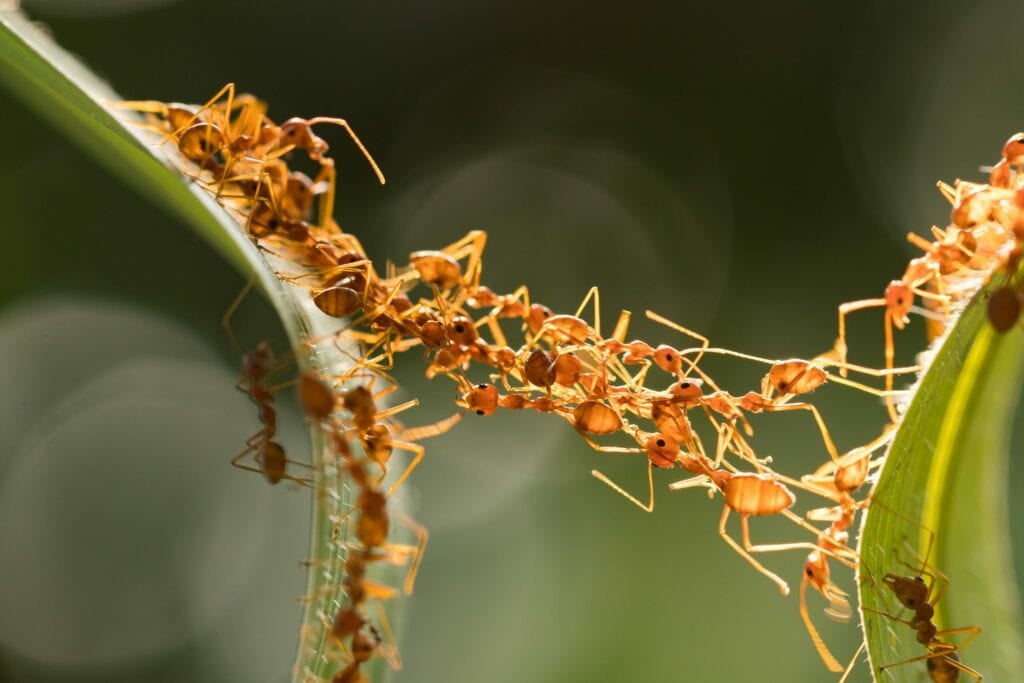
5 min read
Whether I am speaking with a small social purpose organisation just embarking on its impact journey or leaders of long-established foundations, we always circle back to the same conundrum: how do we allocate limited resources, like philanthropic capital, most effectively so that we do not compromise on one choice over another? Especially, as making a choice often means to allocate to some in lieu of others.
As Temperatures Soar, Philanthropy Can Power up South Asia’s Cooling Innovators

Rising temperatures threaten lives and livelihoods around the world. From cities to remote villages, South Asian innovators are tackling the threat – working hand-in-hand with the communities in greatest danger.
AVPN 2020 | Adapting to COVID-19: The Changing Face of Philanthropy

In the face of COVID-19 the philanthropy sector has had to rapidly adapt to the urgent needs of their grantees and broader communities.
AVPN 2020 | Catalysing Philanthropy Through Innovative Approaches

This session focused on how the philanthropy sector can and should use its position of privilege to uncover innovative solutions and then provide visibility and capacity building that can bring these innovations to scale.
AVPN 2020 | Scaling Impact Through Collaborative Philanthropy

While the benefits of collaboration for systemic change are well understood, there are also many impediments. Key stakeholders must clearly define their motivations and objectives before identifying possible collaborators and areas for collaboration.
AVPN 2020 | The Challenges for Foundations in the Coming Decade

While it has been a challenging time as organisations are forced to respond rapidly and with more flexibility than ever before it has also proven that even legacy foundations can adapt.
AVPN Webinar: A Gender Lens Response to COVID-19 Funding & Philanthropy
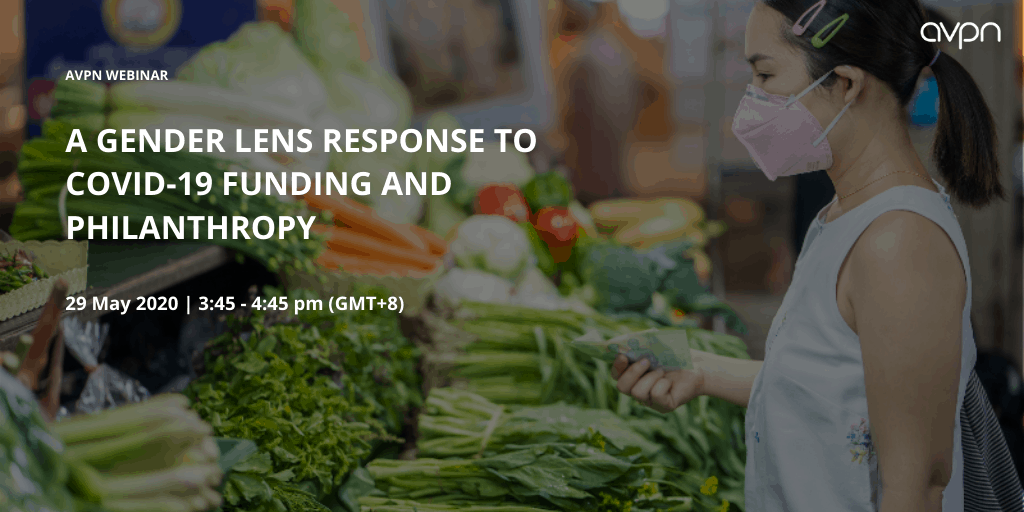
Data has shown that women and girls across Asia and the globe are disproportionately affected by COVID-19. Whether it is the exacerbated burdens of unpaid care work on women and girls, or the increasing rates of gender-based violence during quarantine, the gendered impacts of the current pandemic requires an urgent response from funders and philanthropists.
AVPN Webinar: Understanding the Role of Philanthropy and Social Finance in Innovative Giving Models

AVPN is delighted to invite you to our first hybrid event held in the post-pandemic reality. The in-person event is being held in Singapore but we wanted to open the invitation for others to join from overseas. The online audience will be engaged through a live stream as well as an interactive Q&A. Please join […]
Collaborative Philanthropy in Asia

The time is ripe for collaborative philanthropy in Asia. The amount of philanthropic capital is growing across the region, fuelling a diversifying and maturing philanthropic ecosystem that can function as the backbone for successful collaboration across issues, sectors and borders.
Fight Malnutrition in Asia With the Power of Philanthropy
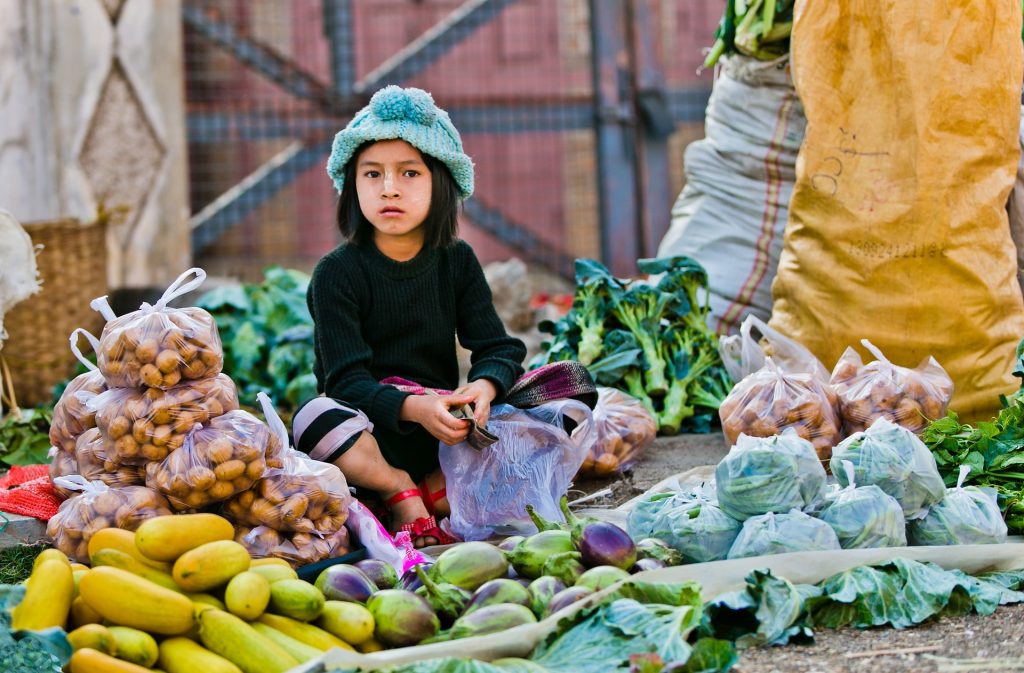
5 min read
It is painfully clear that investment for nutrition is not comparable to the scale of the issue at hand. Interventions in nutrition in Asia receive merely an estimated 1% of public sector funding despite the fact that 45% of all child deaths occur as a direct or indirect result of malnutrition. In fact, the triple burden of undernutrition, micronutrient deficiencies and overnutrition at today’s levels costs the global economy up to US$3.5 trillion annually. In light of this, it is not only imperative that actors in the space consolidate their efforts to achieve global standards for nutrition but also make room for more private sector engagement.
How are Grantmakers Supporting Public Schools and Students Affected by COVID-19?

3 min read
Preventive measures to contain the coronavirus outbreak necessitated a global economic lockdown, prompting abrupt closures of all schools and educational institutions worldwide. As per UNESCO estimates, this has negatively impacted over three-quarters of the world’s roughly 1.5 billion school children impeding their learning and psycho-social development.
How Could COVID-19 Change Philanthropy in China?

4 min read
Andre Shen, founder and CEO of Bridge Consulting in Beijing, argues that COVID-19 could mark a watershed moment for Chinese philanthropy, as donors turn their attention to pharmaceutical research and development.
How to Leverage Corporate Expertise to Empower People With Disabilities in China

3 min read
The COVID-19 pandemic has significantly impacted marginalised groups in China, particularly the disabled population of 85 million people. At the moment, advocacy for extra care for the disabled mainly focuses on access to medical care and financial benefits from the government. Little attention has been paid to long-term challenges linked to education and employment, which the pandemic has worsened.
Innovative Finance Models: The New Face of Philanthropy

6 min read
Around the world, sources of public funding are insufficient to provide all people with the essential social services required to live healthy lives. The role of the private capital has become increasingly critical, in order to bridge these social provision gaps. The private sector has grown bolder by adopting innovative financing mechanisms to address root social issues alongside the public sector.
Lessons Learnt: Philanthropy’s Response to COVID-19 Across North Asia

4 min read
COVID-19 started its spread in Asia and has since become a global pandemic. It is clear that we are facing unprecedented challenges through the widespread disruption to healthcare, financial markets, economy, livelihoods, travel and supply chains.
Navigating Philanthropy for the Next Generation
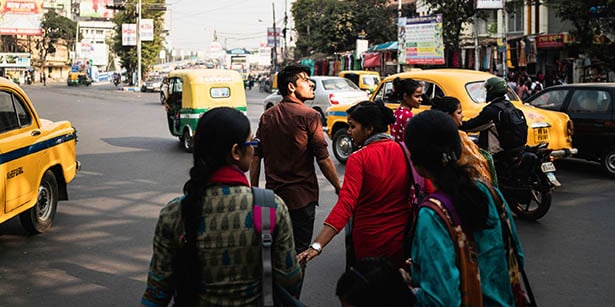
Working in next gen philanthropy is challenging. How does one deal with wrong perceptions, pressure, and proof-of-success? Amira Shah Chhabra, a participant in the Investing for Impact for the Next Generation program, shares her learnings from dealing with everyday limitations and experiencing the calming feeling of belonging.
Philanthropic Opportunities to Systemically Mitigate Pandemic Impact

5 min read
Against the backdrop of the global epidemic, the COVID-19 outbreak has surfaced global role models whom we can learn from to respond effectively and efficiently to the threat. It has proven that no one-off responses can tackle such unpredictable outbreaks; instead, systemic, collaborative, and long-term efforts are required. As communities step up to tackle this disease, it is an opportune time to reflect on how philanthropy can take proactive steps to prepare for future outbreaks.
Philanthropy Handbook: Giving Effectively from Singapore to Asia-Pacific

Philanthropy Under the Magnifying Glass: What are Short and Long Term Priorities?

5 min read
“There’s never been such an existential challenge to the future of the nonprofit sector,” according to Ford Foundation President Darren Walker. This sentiment was echoed consistently by speakers and delegates over the course of the AVPN Virtual Conference 2020 Philanthropy Day, as was the view that the COVID-19 pandemic is placing the philanthropic ecosystem under the magnifying glass from several different perspectives.
Pooled Funds as a Tool for Achieving Collaborative Philanthropy Goals
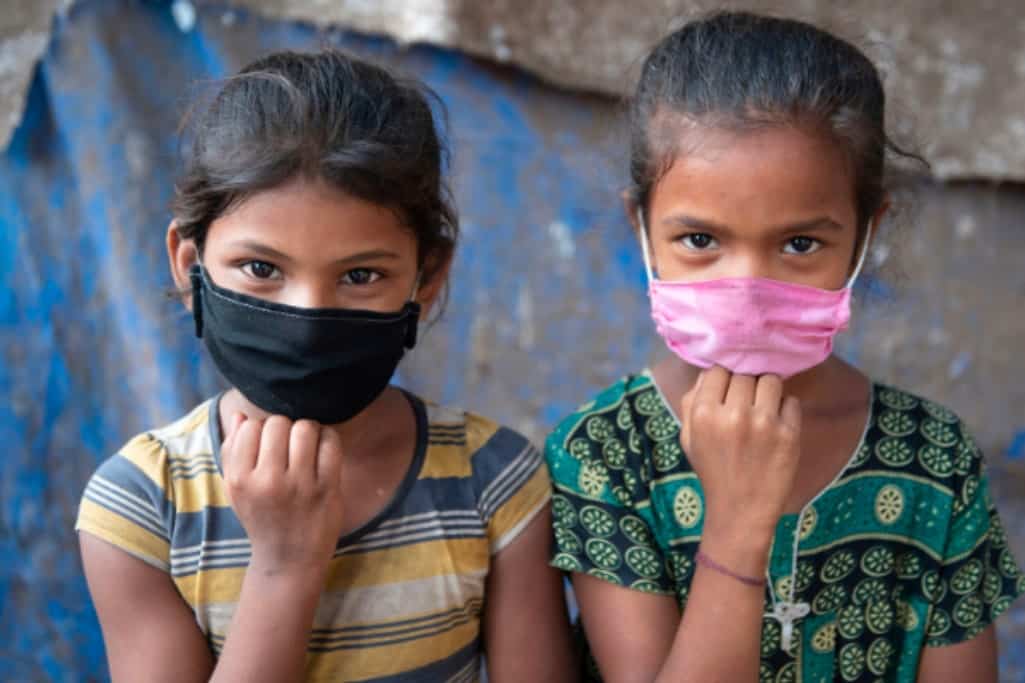
With less than 10 years to reach global commitments to the SDG goals and with a recovery from a global pandemic to tackle, philanthropy is needed more than ever yet no one organization can change the existing status quo or achieve the scale of impact that is truly needed. This is where collaborative philanthropy can make a difference. Collaboration is an emerging trend in Asian philanthropy and with a growing and diversifying philanthropic environment, cross-sector, multi-stakeholder collaboration at scale is becoming a growing movement in Asia.
Putting Girls Front and Center: Empower’s Girls Advisory Council Shapes a Better Future
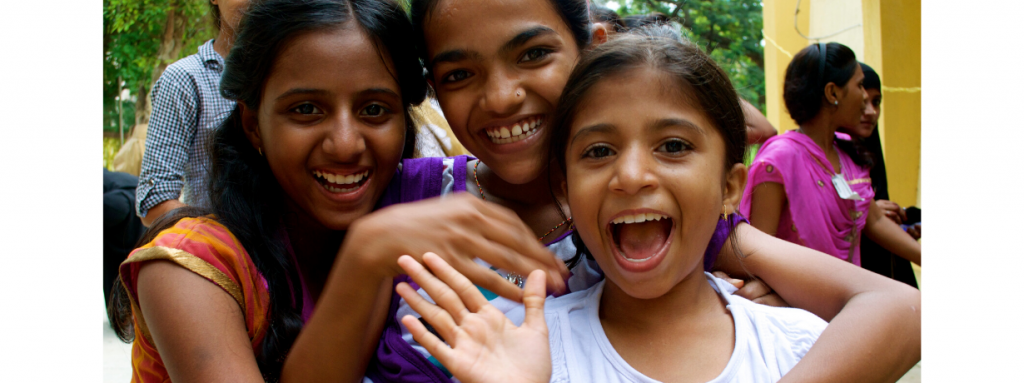
7 min read
To fully empower girls and young women, EMpower’s Country Director for India, Nisha Dhawan, tells us how EMpower – The Emerging Markets Foundation embraces “participatory philanthropy”, anchoring the opportunity for girls to write their own futures through their Girls Advisory Council in India.
Social Impact Bonds: How Do We Avoid A Bubble?

By Paul Carttar Social impact bonds (SIB’s) are substantive innovations with distinctive potential to add meaningful value to our society. But, then, so were Dutch tulips, early railroad stocks and, of course, dot com startups. History counsels that genuine bubbles are identified not by their inflation but by their bursting. So it’s premature to pass […]
Special Discount for AVPN Members to Philanthropy in Asia Summit

Beneath the unprecedented prosperity in Asia lies unsettling complex issues that continue to shape the landscape of our region. We need multi-faceted, impactful solutions to these issues. AVPN members embody this spirit of innovation in their philanthropy – and we are pleased to partner with Singapore’s National Volunteer & Philanthropy Centre in the upcoming Philanthropy […]
Three Ways AVPN Members Have Responded to COVID-19 in Greater China

4 min read
Two months since coronavirus (COVID-19) first made headlines, over 110,000 people in more than 100 countries have been diagnosed with the virus, and thousands of deaths have been reported. Described as a “once-in-a-century pathogen”, the virus has wiped $50 billion off global exports in February alone.
Three Ways Companies Can Increase Corporate Value through Social Impact
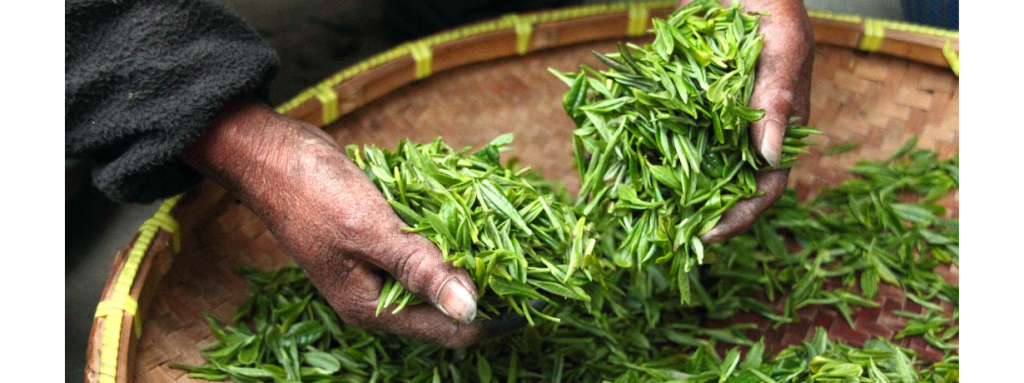
4 min read
In the midst of this watershed COVID-19 pandemic, companies recognise the reputational risks in ignoring the plight of vulnerable groups such as the minorities and gig workers. Lacking insurance coverage and job security, some 38% of the global workforce or 1.25 billion workers in the affected industries have experienced or are facing imminent job losses, putting renewed pressure on governments and the social services in addressing emerging needs.
Which Climate Pollutants are Responsible for 45% of Global Warming? How Asian Philanthropists can address them

Short-lived climate pollutants (SLCPs) are a group of lesser-known emissions with immense warming potentials that are 27 to 1,300 times more damaging than CO2. Given the potency of SLCPs, an aggressive reduction of such super pollutants is one of the most effective strategies for combating the climate crisis now. Explore how you, as grantmakers and investors, can support solutions tackling SLCPs today.
Why Philanthropists, NGOs and CSR Must Collaborate With the Government to Augment Vaccination Coverage in India?

It is assuring to see the fall in number of COVID-19 positive cases, and increase in the vaccination coverage. Maharashtra became the first state to fully vaccinate over a crore people and Bhubaneswar became the first city to vaccinate its hundred percent population. Many more such states and districts will accomplish their vaccination coverage goals in the coming months, but learning from India’s ‘Universal Immunization Program’ (UIP) on full immunization coverage (FIC), tells us that all states and districts may not be able to vaccinate their population with the same speed against covid-19 due to the various bottlenecks involved; scarcity of healthcare infra & trained human resources especially in the hard to reach areas, and vaccine hesitancy due to the lack of awareness are some of them.















